Graham Reid | | 6 min read
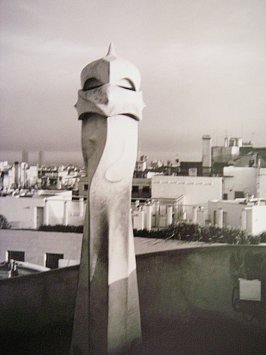
We should expect to suffer for our art. God knows I have for mine -- although standing in the rain outside Madrid's famous art gallery the Prado on a bitterly cold day might just have be taking it too far. It was. I quit the queue and headed back to my tiny hotel room for a warm shower, then jumped puddles to the nearby bar where I cheerfully wasted both myself and a wet Sunday.
That night I staggered back through the downpour to my room and in the dark slipped on the wet linoleum. I split open my nose on the iron doorhandle. As I was mopping up buckets of blood and feeling relieved I was so self-medicated I wasn't in pain I reflected on this appropriate end to a day which had begun badly anyway.
My intentions when I got up that miserable morning had been excellent -- the room of Goya's late period "black paintings" which I had travelled halfway around the world to see.
I woke early that day and when pulling back the curtain the whole thing crashed off its hooks. I got on the bed to put it back up, the bed wobbled and I was pitched forward, smashing against the window.
Only an unsteady hand on the frame prevented me from pitching out and onto the concrete courtyard three storeys below.
I spent an hour trying to explain by gestures and re-enactment what had happened to a dumpy and distressed cleaning woman who reacted as if I had just told her the guys from the Inquisition were popping back after lunch and they looked pretty unhappy.
There was much wailing and gnashing of teeth in rapid and incomprehensible Spanish.
I fled and made my way through increasingly heavy showers down to the gallery. Things could only improve.
But I hadn't counted on the Prado also hosting a Monet exhibition and the queues of well-prepared and elegantly dressed upper-class people bussed in at opening time with their protective umbrellas and raincoats.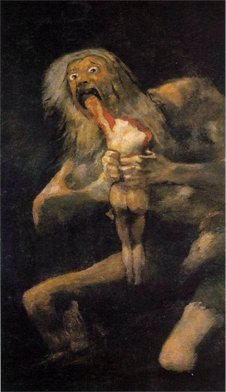
My leather jacket simply directed the rain to my jeans and boots, so I cut my losses.
Goya (whose "black paintings" truly are extraordinary) would still be there when the weather improved. And they were, the following day I spent an afternoon in just that one room staring in wonder and awe.
But by fleeing the previous day I hadn't so much quit as done what major athletes do, held my efforts and energy back for a greater event.
This wasn't the first time I have suffered for great art.
In fact a fortnight before the Madrid misery I had also almost been foiled by Joan Miro in balmy Barcelona.
Miro occupies a central place in the history of contemporary art. But he almost wilfully seemed to have marginalised his magnificent museum in Barcelona. It's a bit off the beaten track and you don't want to try walking there. Take it from one who did. It's a marathon, not a sprint.
The handsome Fundacio Joan Miro has a commanding view across the city -- from which you can conclude it is located at a very high point. Very high.
It was a warm afternoon when I headed off to the much vaunted gallery on Montjuic (Jewish Mountain) in the south west of the city with its collection of around 400 of his paintings, many of them compellingly massive.
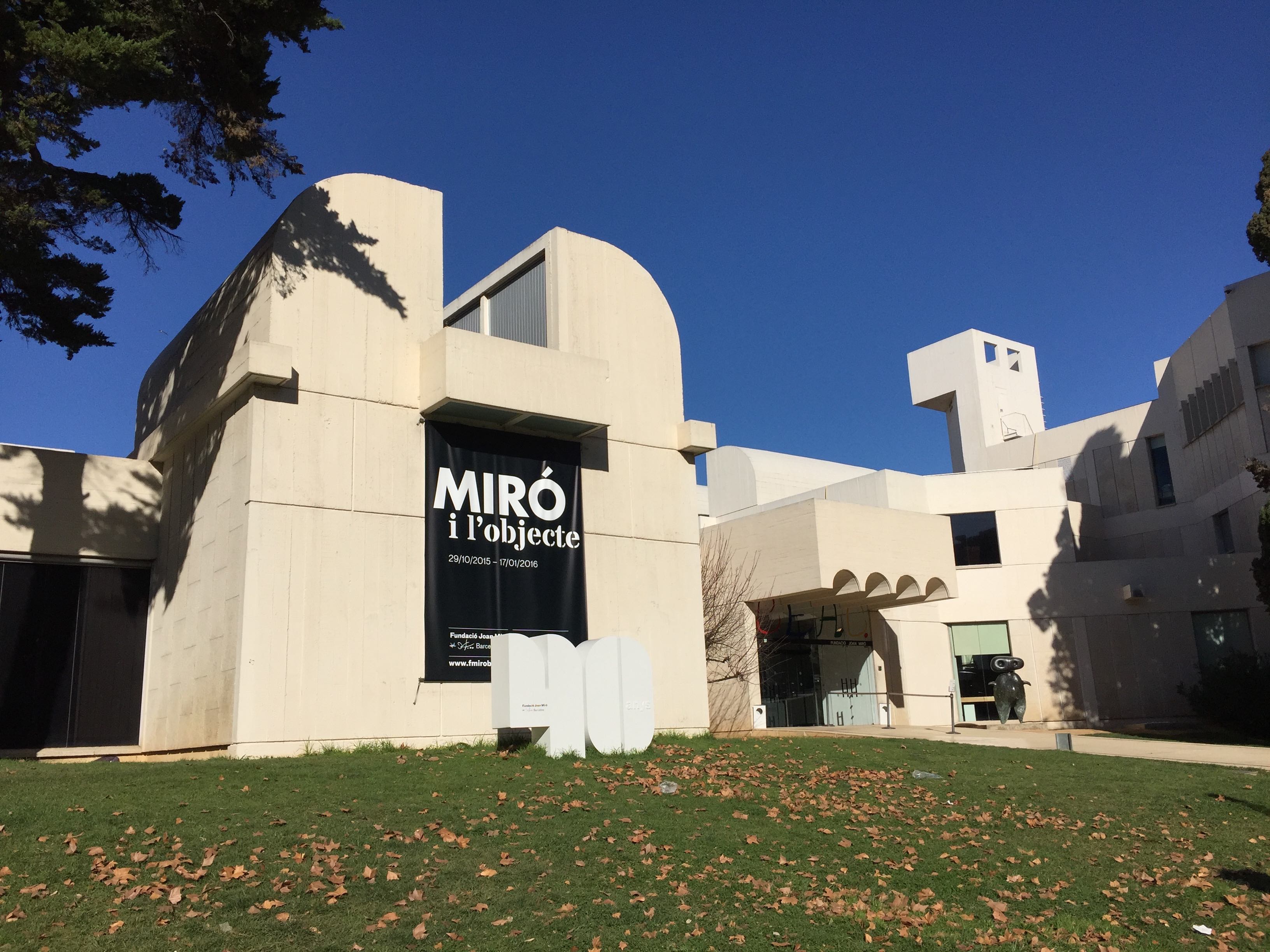 I took the Metro to nearby Espanya station and figured the museum wasn't too far away after what promised to be an interesting walk. The Montjuic area is stacked with attractions like the archeological museum, theatres and gardens. A little further over is the 1992 Olympic Stadium area and I thought that maybe after giving Miro a day I might wander over that way at dusk and watch the emerald Mediterranean disappear under the falling dark.
I took the Metro to nearby Espanya station and figured the museum wasn't too far away after what promised to be an interesting walk. The Montjuic area is stacked with attractions like the archeological museum, theatres and gardens. A little further over is the 1992 Olympic Stadium area and I thought that maybe after giving Miro a day I might wander over that way at dusk and watch the emerald Mediterranean disappear under the falling dark.
But of course everything is flat on a map -- especially the cheap kind I was trusting -- and as incline leaned into small hill then became alarmingly steep road I could feel the weight of my small bag increase with every aching step. Up another incline, up three helpfully placed escalators, then some more walking along a road which dipped briefly only to rise even more sharply . . .
Clearly, as our sportspeople say, my preparation hadn't been what it should have been. I hadn't done the hard yards and was having to do them now. I pushed through the pain barrier.
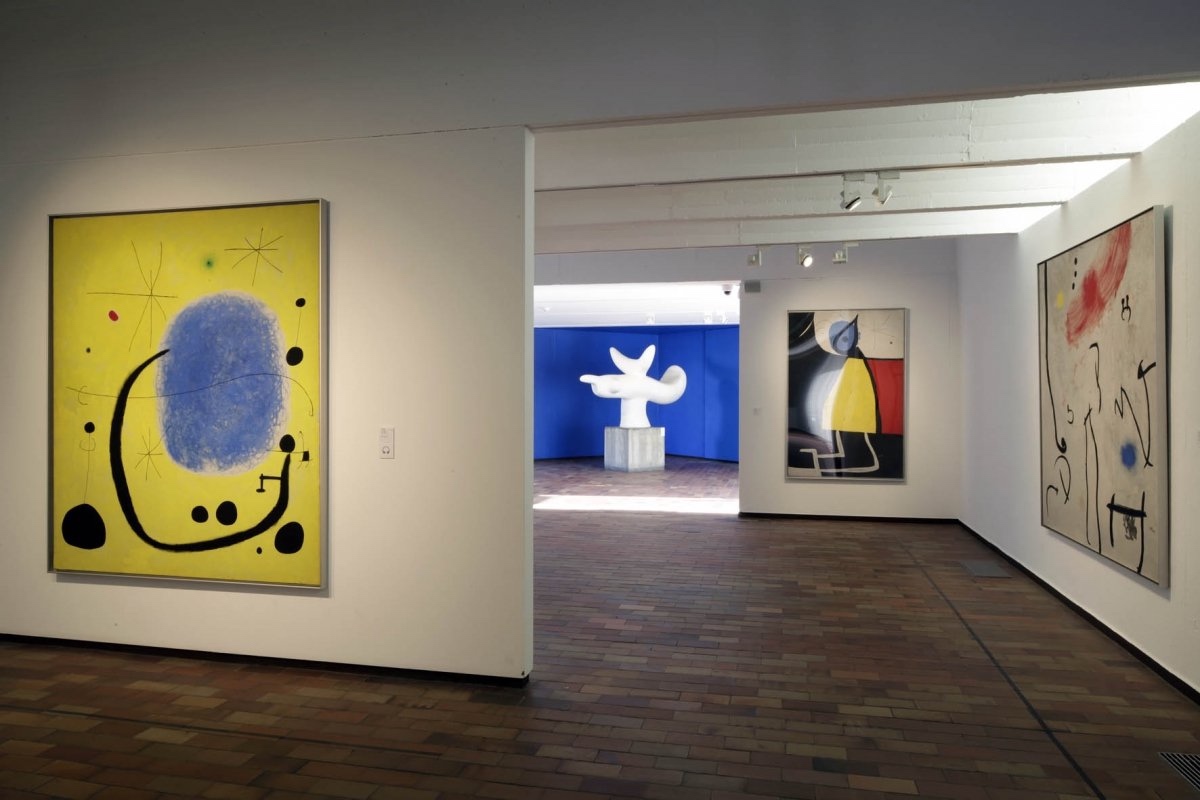 Yes, there was quite a view but Miro, not a city snoozing under a haze of heat, was what I was after. Mostly I just wanted to stop suffering for someone else's art.
Yes, there was quite a view but Miro, not a city snoozing under a haze of heat, was what I was after. Mostly I just wanted to stop suffering for someone else's art.
Of course there is a bus right to the door as I learned on arrival -- I found it for the trip back down which was some small consolation -- but the struggle was worth it.
Miro is the greatest Catalan artist of last century. He was born in 1893 and grew up in the old part of the city. His father was a watchmaker and silversmith but early in life Miro was taken by drawing and gravitated to the countryside and coastline.
As a young artist he split his time between Paris and the Catalan coast, met Picasso and his circle, and explored collage as well as painting.
He couldn't draw -- then again, who can these days? -- but boy, he could paint! His one dimensional works may lack perspective but they create a sense of depth like few others. And they gain power from their enormous scale.
Miro created his own visual language and his curved patterns evoke birds (a favourite subject, along with women) and a timelessness.
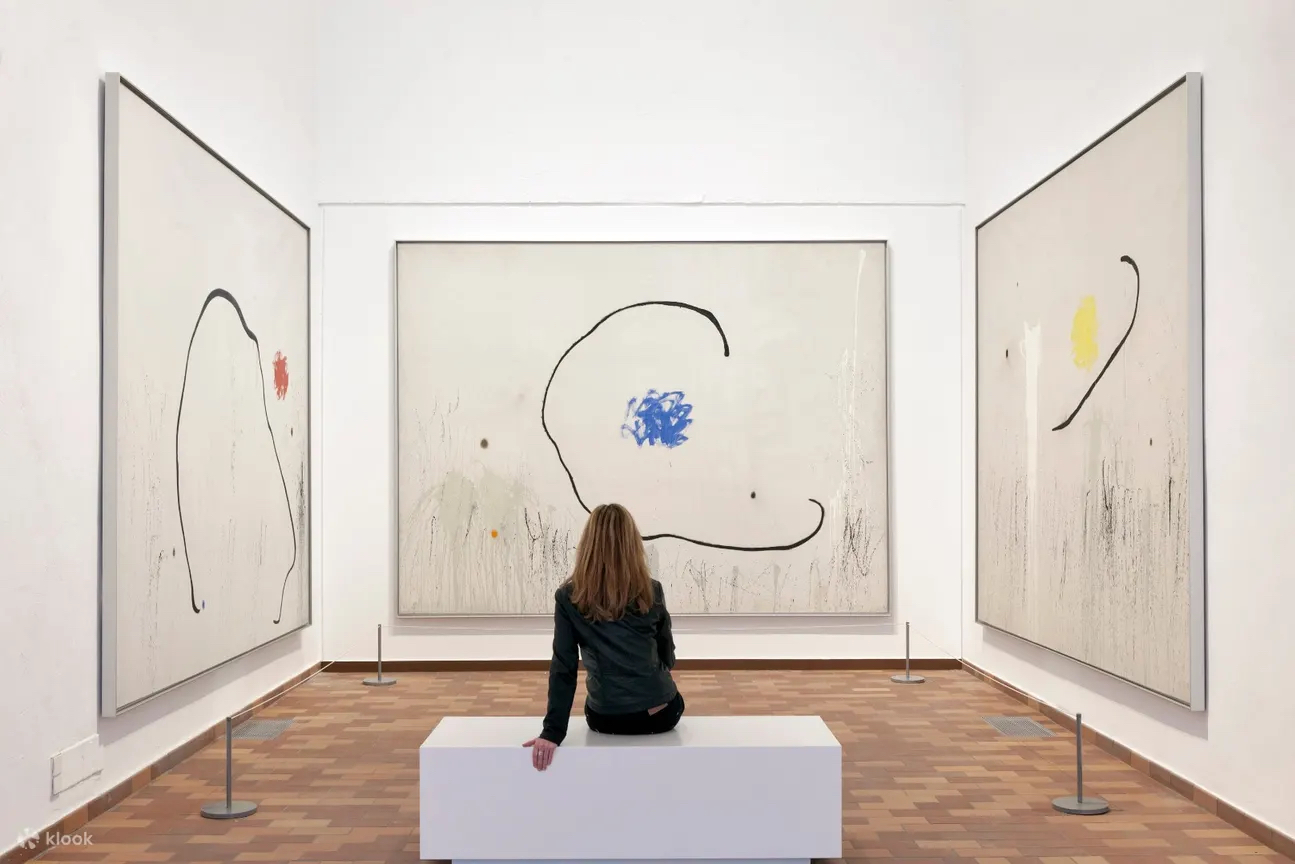 Room after room in his enormous museum reveals massive, sometimes minimal, paintings and glowing rainbow-hued tapestries. "Yeah, no. Awesome," as the sportspeople say.
Room after room in his enormous museum reveals massive, sometimes minimal, paintings and glowing rainbow-hued tapestries. "Yeah, no. Awesome," as the sportspeople say.
Realised by the architect Josep Lluis Sert and built in the white Mediterranean style, the museum itself offers a gentle walk through Miro's art starting with breathtakingly large tapestries of bold colour. There are his earliest drawings (and no, he really wasn't that good) and further on some of his sculpture. But in the natural light and airiness of these generous spaces it is his large-scale paintings which are the most forceful.
In one area called the Octogon, which many patrons walk past because it appears there is little to see, are great white canvases with thin, single lines of paint on them. They are late works and designed for contemplation -- or for those who wish to slow down and really see. Seldom has so little said so much and, in this building of his own design, to so many.
At this time of his life Miro wanted his painting not to be an end in itself, but to bring about a certain state of mind, to stimulate the imagination or induce meditation. They possess a Zen simplicity and intellectual elegance. Miro wasn't without humour however.
On the terrace outside are his whimsical sculptures made from parts of shop mannequins, chairs and found objects. They are vivid reds, blues and yellows, and stand like frozen clowns -- or moments -- amid the whiteness of the museum walls and the pale, misty blue sky above.
And so the hours rolled by effortlessly in Miro's gently provocative company. I took a break for a coffee at the cafe, wandered the terrace once more to enjoy the city stretched out below, browsed in the shop a while, then went back to take in again the tapestries and Alexander Calder's beautiful, liquid metal Mercury Fountain.
It was late afternoon when I finally walked out into the cooler air. I let the idea of the Olympic Stadium go and got on the bus with a gentleman from Denmark. We chatted about Miro, Barcelona, and the various merits and debits of our homeland. Halfway down the hill we passed a couple wheezing their way up, doing the hard yards, suffering for their art.
He looked at me conspiratorially: "A few years ago I was foolish enough to try to walk here. I am pleased to learn I am not the only one."
I smiled, then looked out the window at the houses of Barcelona.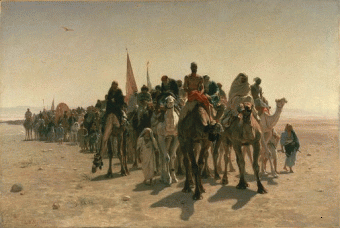
Footnote: While in Paris on another trip I went to see an extraordinary painting by Leon Belly (1827-77), an Academic painter and Orientalist whose Pilgrims Going to Mecca (1861) I had seen five years previous and which had mesmerised me. Although not the sole point of going to the Musee D'Orsay it was the work that had me in excited anticipation.
Needless to say, it was in storage.
.
These entries are of little consequence to anyone other than me Graham Reid, the author of this site, and maybe my family, researchers and those with too much time on their hands.
Enjoy these random oddities at Personal Elsewhere.

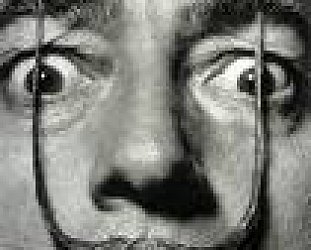


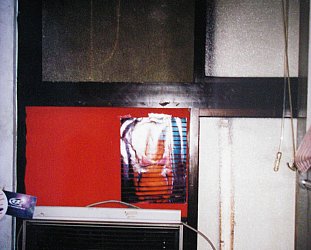


post a comment